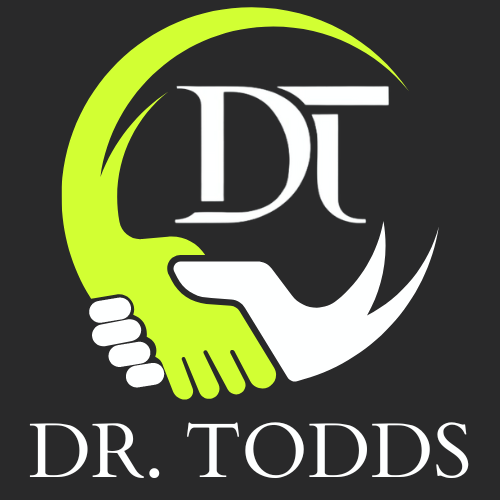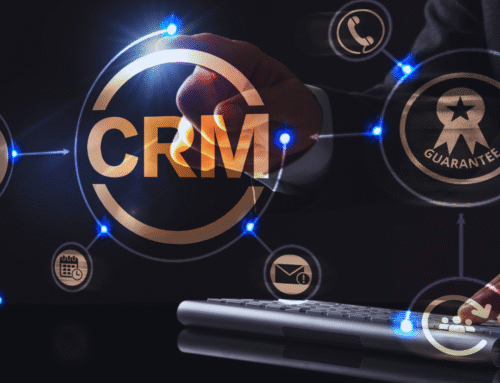
Small and medium-sized enterprises (SMEs) face unique challenges in the crowded marketplace. Effective content marketing can set them apart, driving engagement and conversions. The best content marketing tactics for SMEs focus on leveraging targeted storytelling, optimizing for search engines, and utilizing social media to build a community.
By crafting relevant and valuable content, SMEs can foster relationships with their audience while enhancing their brand visibility. Incorporating SEO best practices ensures that content reaches the right people at the right time, significantly boosting marketing efforts. Creating a strong social media presence allows these businesses to engage directly with customers, leading to increased loyalty and trust.
In a competitive landscape, SMEs must adopt innovative content strategies that resonate with their audience. Prioritizing personalization and authenticity in their messaging will not only attract attention but also convert leads into loyal customers.
Foundations of Effective Content Marketing for SMEs
A strong foundation in content marketing is crucial for small and medium-sized enterprises (SMEs). Focusing on the target audience, business objectives, and customer personas enhances marketing efforts, ensuring alignment and effectiveness in reaching goals.
Understanding Your Target Audience
Identifying the target audience is essential for SMEs. This involves analyzing demographic data, including age, gender, location, and interests.
It is beneficial to gather insights through methods such as surveys, social media analytics, and website analytics. Understanding customer pain points and preferences helps in crafting content that resonates with them. This tailored approach increases engagement and conversion rates, ultimately enhancing the ROI of marketing efforts.
Defining Clear Business Objectives
Clear business objectives guide content marketing strategies. SMEs must establish specific, measurable, attainable, relevant, and time-bound (SMART) goals.
Examples include increasing website traffic by 25% within six months, generating 100 new leads per month, or boosting social media engagement by 15%. Setting objectives helps allocate resources effectively and create relevant content that drives results. Validating objectives through customer data ensures they align with the audience’s needs and the overall business strategy.
Building a Customer Persona
Creating detailed customer personas is vital for effective content marketing. A customer persona represents the ideal customer and is based on data collected about the target audience. This persona should include information such as demographics, buying behavior, motivations, and challenges. Mapping out the customer journey allows SMEs to understand how potential customers interact with the brand at different touchpoints.
By using this information, SMEs can tailor their content to address specific pain points, improve user experience, and increase conversions. Properly developed customer personas inform both content creation and distribution strategies, ensuring alignment with marketing budgets.
Essential Content Marketing Tactics and Channels
A variety of content marketing strategies and channels can significantly benefit SMEs. These tactics can enhance visibility, engage audiences, and convert leads into customers. Focusing on SEO, blogging, social media, and email marketing will help businesses thrive in the digital landscape.
SEO and Keyword Research Strategies
SEO is crucial for enhancing website visibility. It involves optimizing content to rank higher in search engine results. Primary elements include:
- Keyword Research: Identify relevant keywords using tools like Google Keyword Planner or SEMrush. Target long-tail keywords for less competition.
- On-Page SEO: Incorporate keywords naturally in headers, titles, and body content. Use meta descriptions and alt text for images.
- Backlinking: Acquire backlinks from reputable sites to build authority and improve SEO rankings.
Regularly updating content and adhering to SEO best practices is essential for sustained results.
Compelling Blog Posts and Blogging
Blogging remains a vital part of content marketing. SMEs should aim for regular blog posts to share expertise and engage readers. Important aspects include:
- Value-Driven Content: Create informative posts that address specific audience pain points. Use clear language and actionable insights.
- Formatting: Incorporate headers, bullet points, and images to enhance readability. Short paragraphs make content more digestible.
- Call-to-Actions (CTAs): Encourage readers to take specific actions, such as signing up for newsletters or visiting product pages. Effective CTAs can drive conversions.
Consistent, high-quality blog content reinforces brand authority and improves SEO.
Leveraging Social Media Marketing
Social media marketing is essential for reaching and engaging target audiences. Channels like Facebook and Instagram can amplify brand messaging. Key strategies include:
- Platform Selection: Focus on platforms where target audiences are most active. Facebook is widely used for business promotions, while Instagram offers visual storytelling.
- Content Variety: Use a mix of images, videos, and stories to retain engagement. Regular posting keeps the audience informed and entertained.
- Audience Interaction: Respond to comments and messages promptly. Building relationships encourages customer loyalty and fosters community.
Monitoring social media analytics can help refine strategies and increase effectiveness.
Effective Email Marketing Campaigns
Email marketing is a direct way to nurture leads and maintain customer relationships. Important components include:
- Segmentation: Divide the email list based on customer behavior and preferences. Tailored messages resonate better with specific groups.
- Content Personalization: Use the recipient’s name and tailor content to their interests. Personalization improves open and click-through rates.
- Clear CTAs: Each email should have a clear purpose. Encourage actions such as visiting a blog post or making a purchase.
Regularly testing email campaigns can help optimize performance and enhance engagement.
Advanced Approaches to Boost Engagement and Conversions
Implementing strategic tactics improves engagement and enhances conversion rates for small and medium-sized enterprises (SMEs). Focusing on the effective use of visual content, personalization, and meticulously planned content calendars can significantly influence the purchase decision process.
Utilizing Videos and Visual Content
Videos are a powerful tool for SMEs to capture attention and drive engagement. Engaging visuals can boost the likelihood of sharing on social media, increasing brand visibility.
- Types of Videos: Explainer videos, testimonials, and how-to guides can demonstrate product value.
- Platforms: Utilizing platforms like YouTube and Instagram can also enhance reach.
Incorporating high-quality images and infographics supports key messages. Visual storytelling can simplify complex information, making it more digestible for prospects.
Implementing Personalization for Prospects
Personalization creates a more meaningful experience for potential customers. Tailoring content based on user behavior and preferences can significantly increase engagement rates.
- Dynamic Content: Use of dynamic content in emails and websites allows SMEs to address user interests directly.
- Data Analysis: Analyzing customer data from interactions and purchases offers insights for crafting customized messages.
By leveraging customer insights, businesses can enhance their marketing efforts, making prospects feel valued and understood.
Optimizing the Content Calendar
A well-organized content calendar is crucial for maintaining consistency and relevance. It aligns with marketing goals and audience needs, ensuring timely delivery of content.
- Content Planning: Scheduling posts based on product launches, seasonal trends, and campaign strategies maximizes visibility.
- Evaluation: Regular assessment of content performance helps in refining future strategies.
Utilizing tools for scheduling and tracking allows SMEs to optimize resources and streamline digital advertising efforts, including Google AdWords. Maintaining flexibility within the calendar ensures responsiveness to market changes.
Adapting Content Marketing Strategies for the Digital Age
In the digital age, SMEs must adjust their content marketing approaches to effectively reach their audience. Integrating digital marketing strategies, leveraging subject matter experts, and responding to current trends are essential components of this adaptation.
Integrating Digital Marketing Strategies
Successful SMEs blend content marketing with various digital marketing strategies. This includes search engine optimization (SEO) to enhance visibility. By optimizing content with relevant keywords, businesses can improve their rankings on search engines, drawing in more traffic.
Utilizing social media platforms is another key strategy. Regularly posting engaging content on platforms like Facebook, Twitter, and LinkedIn helps in building brand awareness and fostering community interaction. Email marketing also plays a crucial role, allowing SMEs to nurture leads through personalized communication and targeted offers.
Leveraging Subject Matter Experts
Engaging subject matter experts (SMEs) can add credibility and depth to content. Collaborating with recognized figures in specific fields helps in creating authoritative content that resonates with the audience. These experts can provide insights, case studies, or interviews that enhance the quality of the information shared.
Additionally, integrating content created by these experts into inbound marketing efforts can significantly boost engagement. Including their perspectives not only enriches content but also elevates the brand’s reputation. This can be especially vital in a post-COVID-19 era, where trust in information sources has become paramount.
Responding to Trends and Events
SMEs must remain agile, adapting content strategies based on current events and trends. Being responsive during crises, such as the COVID-19 pandemic, allows businesses to demonstrate relevance and empathy. Timely content addressing these events can strengthen the connection with the audience.
Monitoring shifts in consumer behavior, driven by trends, also enables SMEs to adjust their messaging. Utilizing analytical tools facilitates the tracking of audience preferences, ensuring that content remains aligned with what is currently resonating in the market. This proactive approach is essential for maintaining engagement in a fast-paced digital environment.



